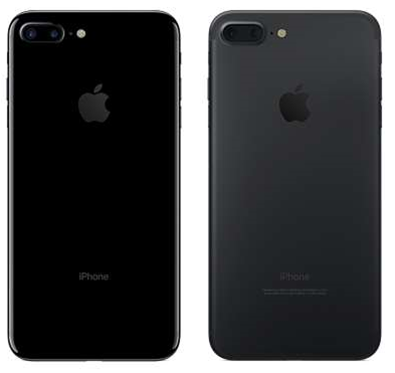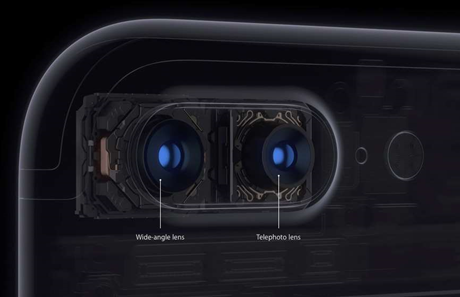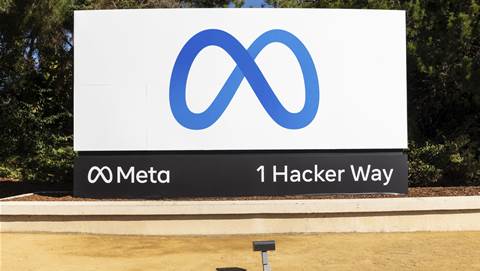Apple has unveiled two new iPhone 7 models that ditch the headphone jack and boast improved cameras and reworked hardware featuring a new A10 chipset and weather-sealed cases.

Today's launch event in San Francisco provided few surprises thanks to extensive leaks on the design and features for the new iPhones.
As expected, the iPhone 7 will no longer have a 3.5mm headphone jack.
Apple has filled the space vacated by the jack with a new Taptic Engine vibration tool to drive the 3D Touch haptic feedback feature for the smartphone display, along with a stereo speaker that the company said is twice as loud as the single unit on the iPhone 6s Plus.
The iPhone 7 includes a set of EarPods as well as a 3.5mm headphone jack adapter dongle that will both use the Lightning connector.
Apple is selling its new small rechargeable wireless AirPod earbuds separately for A$229. They will go on sale in October this year.

The AirPods are driven by a W1 wireless chip that Apple said provides improved connection and sound while reducing energy consumption.
Both the iPhone 7 and iPhone 7 Plus have a reworked camera system that uses a new image signal processor designed by Apple. The company says it can process over 100 billion operations on a single picture in 25 milliseconds.
Compared to the existing iPhone 6s and 6s Plus, the new smartphone cameras get a resolution bump from 8 megapixels to 12MP, a faster, f/1.8 maximum aperture (up from f/2.2) lens with six elements, and the True Tone flash now features four light emitting diodes to produce 50 percent more light with a wider colour spectrum.
The iPhone 7 Plus uses two of the new 12MP imaging units: one with a wide-angle lens, the other with a telephoto lens. This provides a two times optical zoom, and a ten times digital zoom. In comparison, the iPhone 7 only has a five times digital zoom.
The dual camera system will also get a depth of field effect achieved by machine learning to blur backgrounds so as to emphasise objects in the foreground later this year.
Both new iPhones get an improved, 7MP FaceTime HD front-facing camera, with an f/2.2 aperture, 1080p HD video recording, image stabilisation and automatic high dynamic range imaging.
While the screen resolution hasn't been upped on either iPhone, the Retina HD displays have been upgraded with wide colour gamut for greater image and video fidelity, and improved brightness.
Apple said the iPhone 7 and 7 Plus will be substantially faster than predecessors thanks to a new in-house designed ARM-based A10 Fusion chipset with four cores. Two of the cores will be used for computing intensive tasks, while the other two are for low-performance duty.
The processor division of labour is done to save energy for background tasks, with the two high-efficiency cores using only a fifth of the energy of the performance parts, Apple said.
Apple did not quote any metrics for battery life, but said the iPhone 7 would last two hours longer than the iPhone 6.
The iPhone 7 and 7 Plus will be weather sealed - a first for iPhones - and rated at IP67. This means the case is dust and small particle proof, and the phones will survive for up to 30 minutes in one metre deep water.
The two new iPhones now support 25 LTE 4G bands worldwide, including both frequency and time division multiplexing, and 450 megabit per second maximum theoretical speeds.
Voice over 4G (VoLTE) calling is also supported on the iPhone 7 and iPhone 7 Plus.
Australians will be able to buy the new iPhones from September 16, in 32GB, 128GB and 256GB storage variants - there won't be a 16GB model. The 4.7-inch iPhone 7 costs A$1079, $1229 and $1379 as storage increases.
The iPhone 7 Plus starts at $1269 and goes to $1419 and $1569 for the higher storage models.
Water resistant Watch Series 2
Apple also added new features to its Watch wearable. Series 2 is now water resistant in up to 50 metres depth for swimming, and sports a GPS receiver for more accurate distance measuring when exercising.
The Watch Series 2 is powered by a dual-core processor with an improved graphics processing unit in the new S2 system on a chip. Apple said the Watch display brightness has been ramped up to 1000 candela per square metre for improved visibility outdoors.
Apple's first-generation Watch won't be retired, and while it misses out on water resistance, the Series 1 wearable also gets the new S2 SoC and GPS.
A range-topping Watch Edition model features a ceramic case that Apple says is four times harder than steel.
Watch Series 2 buyers can also buy their devices with synthetic wrist bands from Nike, designed for sports, and leather straps from French haute couture house Hermès. The Nike Sports and Hermès bands are not sold separately.
Australian pricing for the Watch Series 1 starts at $399, and the cheapest Series 2 is $529.
Ceramic-case Series 2 Watches go for A$1799 for the 38mm model, and $1899 for the 42mm variant.





.png&h=140&w=231&c=1&s=0)






 iTnews Executive Retreat - Security Leaders Edition
iTnews Executive Retreat - Security Leaders Edition












_(1).jpg&h=140&w=231&c=1&s=0)



